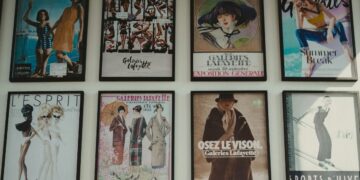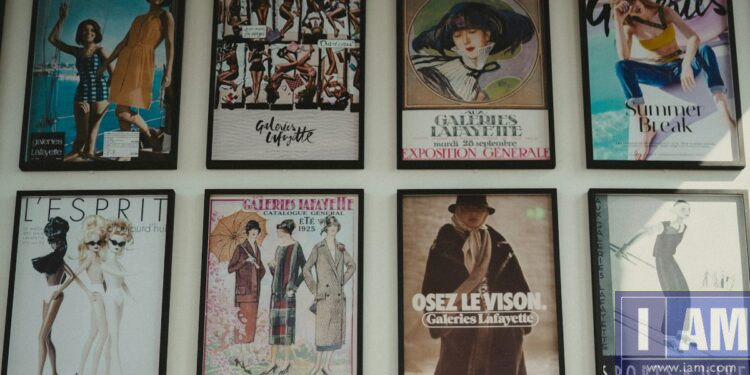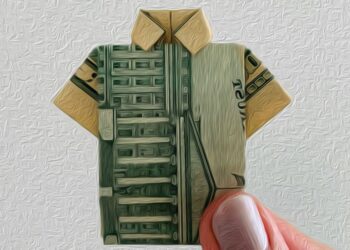Introduction
In the fast paced creative industries of gaming, publishing, advertising, editorial, and comics, art directors are the gatekeepers to the professional opportunities. Art Directors can sift through hundreds of portfolios every day. They often decide in seconds whether to engage further with the portfolio. This article distills the key insights that were taken directly from relevant, well respected industry art directors. So, you can avoid the common pitfalls and position yourself for success as an industry artist. A portfolio is not just a collection of your work. Your portfolio is the reflection of your professional ability and career potential as a successful artist in the industry.
The 8 Core Principles: An Overview
Before we start listing the details, here is the main list of points made directly from the industry art directors:
1 – First Impressions Count: Portfolio reviews will happen at lightning speed. It is best to lead with your best work to grab their attention immediately.
2 – Quality Over Quantity: Limit your portfolio to 5 to 15 great pieces. Any mediocre filler work can almost immediately kill your entire submission.
3 – Showcase the Context and Your Problem-Solving Skills: Show your process, your storytelling ability, and how you solved problems to be a stand out as a professional artist.
4 – You Are Judged by Your Weakest Link: Consistency is the key. Your evaluators will most likely judge you on your very worst piece. Therefore, you will likely not be judged for your best work.
5 – Prioritize Fresh Work: It’s important to show current work that shows your latest skills trump your older, polished work that no longer represents you.
6 – Keep it Simple and Frictionless: Effortless navigation and clean design are essential to avoid any disqualifying barriers.
7 – Tailor Your Portfolio to the Industry Expectations: Research and customise your portfolio to the specific role and the company’s recognized style.
8 – Show Your Personality and Your Voice: Beyond technical skill, show what your unique perspective is that you bring and your confidence to make an impact.
First Impressions: The Make-It-or-Break-It Moment
The Speed of Portfolio Reviews
Art directors across industries agree that reviews are super quick, often just 2-10 seconds initially. Randy Briley, Art Lead and Studio Art Director with 15+ years of experience, says: “I can tell in two seconds looking at any kind of asset where the artist is at in terms of execution… If you don’t grab my attention with a high quality piece of work in the first few seconds then I’ll close your portfolio and move on.” Erik Nilsson, Art Director at Midnight Hub, echoes this: “I want to open an email, click a portfolio link and immediately see your three best pieces of artwork. One click, bam! Your best art right in front of my eyes!”
Time Constraints and Their Impact
Fred Machuca, Art Director at Skechers Footwear, says: “Most art directors are time poor and don’t want to feel obligated to look through a 50-plus page book, especially if the work isn’t hitting the mark.” Louise Sloper, Head of Art at BMB, adds: “There used to be a suggestion that you should start with your best piece of work, then have a nice variation through the middle, then end on a wow. But with reviewers being so time poor nowadays they often don’t get to that stage.” Jenny Ackerman, Senior Art Director at Blurb, says flat out: “I’ll know in 10 seconds if a portfolio has potential.” Gavin Goulden, Art Director at Insomniac Games, explains the pressure: “Each review of an artist takes time, even a few minutes adds up when multiplied by the number of candidates applying for the job.” Greg Foertsch, Senior Art Director at Firaxis Games, sums it up: “The first thing I look at is the portfolio. The second thing I look at is the portfolio. If I decide to email you then I’ll look at your name.”
Quality Over Quantity: Curate Ruthlessly
Ideal Portfolio Size and Composition
Consensus is that portfolios should have 5-15 pieces, focusing on quality rather than quantity. Dion Rogers, Art Director at Blizzard Entertainment, says: “If you’re already employed in the industry you should have in your portfolio 10 to 15 pieces of key art that have shipped in the game. If you’re not already working in the industry five to 10 pieces of your best work is good.” Erik Nilsson agrees: “Quality before quantity – You only want to show me the best images you got. If you are uncertain on a piece: drop it! Bad images might actually cast doubt on your best ones.” Renata Amaral Morris, Founder of EAT Studio, states: “Less is more. A portfolio with five to eight great projects will make a stronger impression than one that includes a mix of great and average work.”
Minimalist Examples
Foertsch shares: “I famously hired an environment artist who had just 3 pieces in his portfolio but they were really strong and all showed that the artist had good taste.” This shows how a concise, high-impact selection can outperform a bloated submission.
Context, Problem-Solving, and Storytelling: Beyond the Final Product
Show Your Process
Kristina Alfonsi, Art Director at EA, says: “The way you solved a problem, or elevated an overall shot with your individual contribution, can be a deciding factor to pursue an interview.” Nilsson adds: “Storytelling in your presentation – Telling a story with your art is another great way to stand out.” Jenny Ackerman advises: “Give context. Guide the viewer through what they are looking at. Don’t forget to provide details about each project, like the goals, challenges and your role in bringing it to life.”
Strategic Thinking
Frédéric Marchand, President of Locomotive, says: “A strong portfolio goes beyond showcasing work – it reveals the thinking behind it. What problem did you solve? Why did it matter?” Ben Hughes, Deputy Art Director at Puffin, praises: “She was the only person who added parts of Charlie to the animal. So as the flea, he’s got the same hairstyle, the snake’s pattern is his jumper’s pattern. It’s brilliant.” These elements turn a portfolio from a gallery into a narrative of professional capability.
Judged by Your Weakest Piece: The Importance of Consistency
Avoid Quality Gaps
Rogers warns: “Sometimes artists put everything into their portfolio. But when you’re presenting your portfolio, start and end with your best stuff, because recruiters will judge you by your weakest piece of work.” Ackerman cautions: “Be consistent. If there’s a gap in quality from piece to piece it either says you don’t care or don’t know the difference.” Sloper notes via industry guidance: “Consistency in both quality and style across your portfolio is a must.”
Cohesion and Style Unity
This ensures evaluators see reliability, not variability, in your work.
Fresh Work Trumps Old: Stay Current
Update for Relevance
Rogers says: “Sometimes your old work can hurt you. Placing ‘ok, but not great’ work in there tells a potential employer that you don’t know how to tell the good from the bad.” Machuca is blunt: “Outdated work is a negative because it’s just not relevant… With older-looking pieces I’ve found myself assuming this person will not be able to produce fresh ideas.” Morris states: “What’s important is showcasing prime work – what’s freshest, most beautiful and relevant.” Hughes confirms: “Illustrators should be armed with a portfolio of work, which should be regularly updated with recent work.”
Spec Work for Beginners
This keeps your portfolio dynamic and aligned with your evolving skills.
Simple Presentation: Eliminate Barriers
Digital Navigation Best Practices
Nilsson advises: “Keep It Clean and Simple! … A simple, neutral background color with a bunch of images and some contact info is all I need.” Goulden frames: “Anything that complicates you getting a job is a bad idea. A good portfolio reduces friction.” Sloper stresses: “My biggest bugbear is when portfolios are created as if they’re presentation boards, and the pieces of work are like thumbnails… I want to see detail.” Morris recommends: “Simple, large thumbnails for a project gallery and big images on detail pages are ideal.”
Physical and Email Considerations
Clean, accessible formats prevent immediate dismissal.
Tailoring to Industry: Show Your Research
Customization for Fit
Sloper says: “You must tailor your design portfolio to the company you’re sending it to… It shows you haven’t understood the job you’re coming for.” Hughes suggests: “If a new illustrator is trying to get their first job, I think one of the best things to do is self-initiated covers.” John Martz, Art Director at Tundra, advises: “I think my advice to any illustrator is to be themselves and allow their portfolio to be the truest most authentic representation of their artistic interests and strengths.” Rogers adds: “If you did your work in a group setting, give credit where it’s due.”
Platform and Submission Strategies
Proper attribution and format choice is professionalism.
Personality and Voice: The Human Element
Beyond Technique
Briley asks: “Is there a spark within the given work that defines the artist’s personality? A particular ‘voice’ that is unique to them?” Ackerman warns: “Be consistent.” Sloper notes: “I’ve noticed that more and more students, particularly, seem to have a lack of confidence… I’d urge you to practice talking through your work.”
Building Connections
This intangible quality often seals the deal.
Conclusion: Applying These Principles for Success
Despite industry variations these all boil down to core truths: lead strong, curate fiercely, provide depth, be consistent, stay fresh, simplify access, tailor thoughtfully and infuse personality. As Nilsson says: “As an Art Director the first thing I will look at is your portfolio… none of it matters if your portfolio is no good.” By following these guidelines artists can create a portfolio that gets noticed and opens doors to real opportunities. Persistence combined with these strategies turns rejections into stepping stones.


















